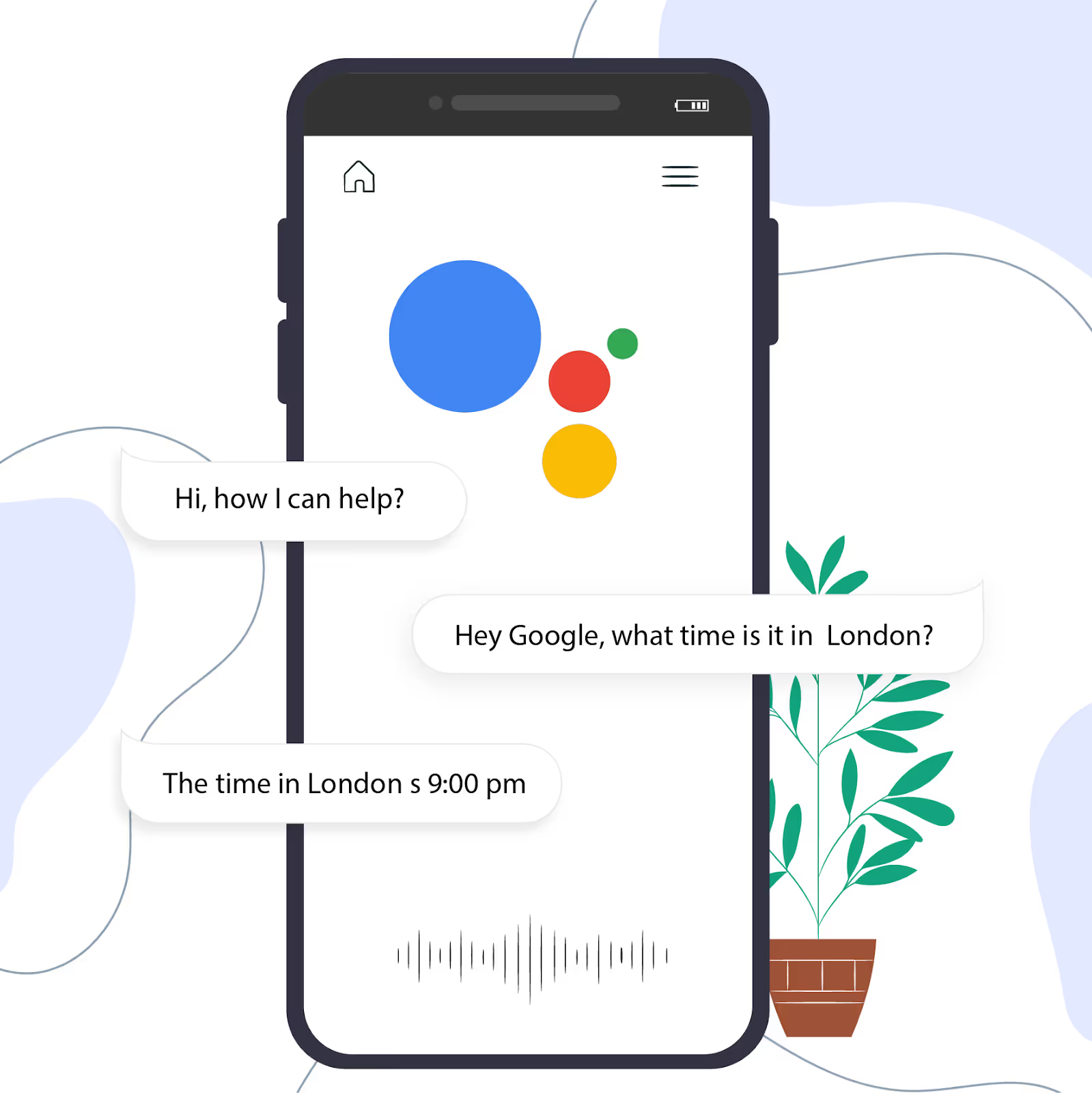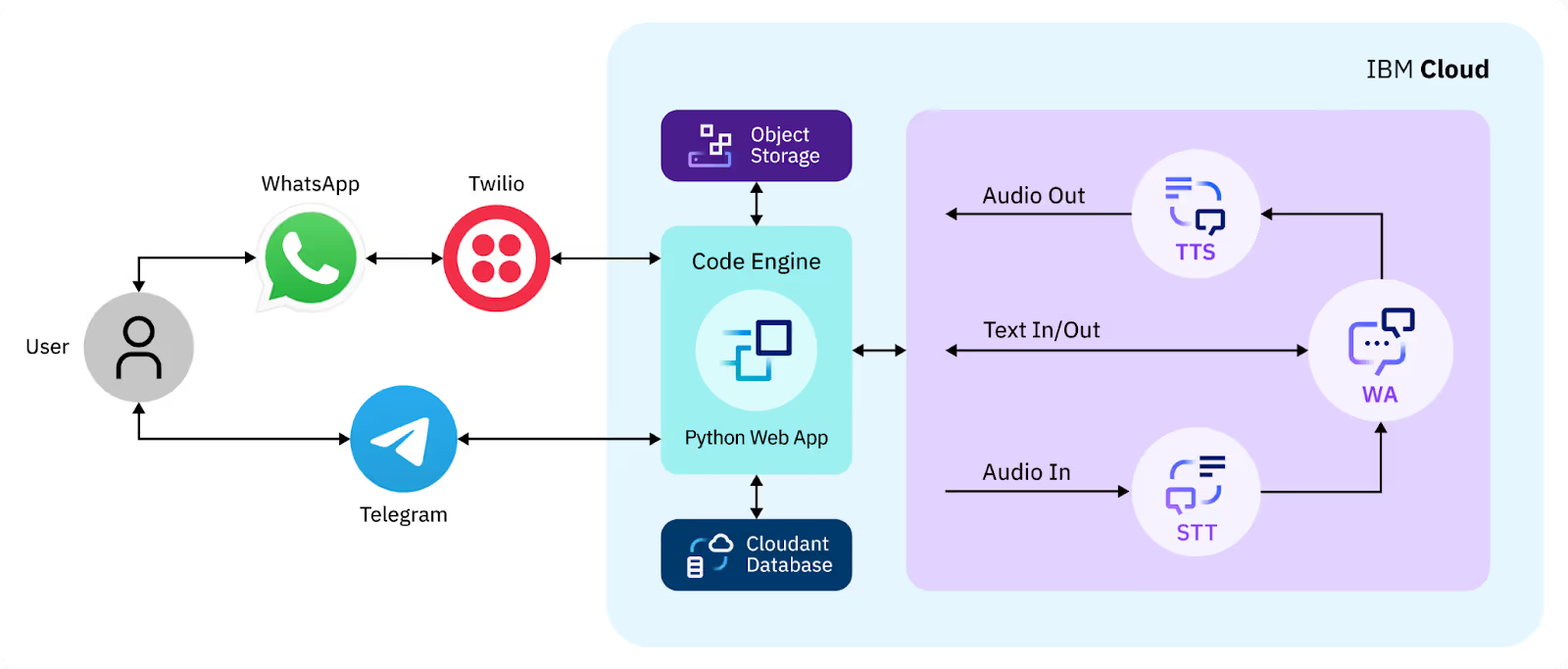Building Conversational Voice AI Bots
AI conversational voice technology has significantly impacted customer interaction and is rapidly evolving. As businesses aim to provide more personalized and responsive service, AI conversation voice bots have emerged as a crucial tool. These bots aim to simulate human conversation, allowing companies to engage with customers in real time with increased efficiency and precision.
As AI voice bots continue to transform customer engagement, it’s essential to understand the technology that powers them. Let's dive into the fundamentals of AI conversation voice bots.
Understanding AI Conversation Voice Bots
AI conversation voice bots are powered by technologies such as Natural Language Processing (NLP), Automatic Speech Recognition (ASR) and Text-to-Speech (TTS). These components work together to interpret, process, and respond to human voices in a way that feels like a natural conversation.
Critical Components of AI Conversation Voice Bots
Building an AI conversation voice bot involves integrating several crucial components to enhance the user experience.
- Automatic Speech Recognition (ASR): ASR is a fundamental component of any voice AI bot. It lets the bot hear and transcribe spoken language into text. For example, the voice chat feature in Google Assistant uses ASR, along with other AI technologies, to listen to what you say and process it to give you a response.

- Natural Language Processing (NLP): NLP is needed to understand and generate human-like responses. It lets the bot understand the context and intent behind user queries. For example, IBM Watson Assistant processes complex queries and delivers human-like responses based on contextual understanding.

- Text-to-speech (TTS): Once the bot has processed the user's input, TTS converts the text response into natural-sounding speech. This is important for keeping the conversation flowing and giving a more human-like experience. For example, IBM Watson's TTS engine is known for its high-quality voice and can be customized for different languages and accents similar to other advanced TTS engines.

- Dialogue Management: This component controls the conversation flow so the bot responds logically and contextually. It handles multi-turn dialogues and keeps the conversation on track even when users change topics or interrupt the bot.
- Voice User Interface (VUI): The VUI is the bot's face, guiding the user through the interaction. A good VUI makes interactions simple and efficient, reducing user frustration and improving the overall experience. For example, Amazon's Alexa is known for its simple VUI, which makes complex tasks voice-controlled.

These key components are vital for creating voice bots that engage users naturally and effectively. Now, let’s delve into why your business should consider building these powerful tools.
Why Build AI Conversation Voice Bots
Businesses today face the challenge of meeting customer expectations in an increasingly digital world. Voice AI bots offer a solution by providing a human-like interaction that can scale. Here are some compelling reasons to build conversational voice AI bots:
- Enhanced Customer Engagement: Conversational AI voice bots let you better engage with customers by offering personalized real-time interactions. Voice AI bots can often utilize context better than simpler chatbots, making conversations feel more natural.
- Cost Efficiency: Voice AI bots can handle many requests without needing more human resources. This saves you operational costs while maintaining high customer service.
- 24/7 Availability: These bots make your business available to customers 24/7, providing support and information at any time of day. They are perfect for global businesses operating across different time zones.
- Improved Accuracy and Consistency: Voice-enabled chatbots use machine learning and NLP to provide accurate and consistent responses, reducing the risk of human error and improving overall service quality.
Building AI conversation voice bots offers enhanced engagement, cost savings, and 24/7 availability. With these benefits in mind, let's explore how to start building one for your business.
How to Build Your AI Conversation Voice Bot

Creating an AI conversation voice bot requires a structured approach to meet user expectations and business needs.
Step 1: Define the Bot's Purpose
Start by clearly defining what your bot needs to do. If you want to reduce call center load, the bot should be able to handle frequent questions like order tracking or account management. Research suggests that well-defined voice bots can potentially reduce operational costs by up to 30% (McKinsey), depending on the specific implementations.
Step 2: Choose the Right Technology
Choosing the right technology is key. For instance, using Microsoft Azure Cognitive Services for NLP and Amazon Web Services (AWS) Polly for TTS ensures robust and scalable bot performance. Additionally, integrating ASR engines like Azure's Speech-to-Text will improve accuracy if your bot needs voice-to-text functionality.
Step 3: Design the Conversation Flow
It's important to have a detailed conversation flow. Make sure the bot can handle interruptions and topic shifts. Advanced bots built on platforms like Nurix AI can distinguish between contextual and non-contextual interruptions, aiming to provide a smoother user experience.
By following these steps, you can build a bot that meets business needs and exceeds customer expectations. Once built, the next step is integrating it into your existing business systems for maximum benefit.
Integrating Voice AI Bots into Your Business
Integration with existing systems is critical to maximizing the benefits of a voice AI bot.
- Seamless Integration with Existing Systems: Ensure your voice AI bot integrates smoothly with existing CRM systems like Salesforce. This will maintain consistency across all customer interaction channels and improve data flow for personalized customer experiences.
- Customization and Scalability: Choose voice AI solutions for customization and scalability. As your business grows, the bot should be able to handle increased volumes of interactions without compromising performance. Scalability ensures long-term efficiency.
- Training and Adaptation: Regularly update your AI conversation voice bots with new data to improve their accuracy and effectiveness. This continuous learning will help the bot adapt to evolving customer needs and business processes.
- Compliance and Security: Implement robust security measures to ensure data privacy, primarily if your bot handles sensitive customer information. Depending on your industry, make sure your AI conversation voice solution complies with regulations like GDPR or HIPAA.
- User Experience Design: Focus on designing an intuitive and user-friendly Voice User Interface (VUI). This will enhance customer interaction by making the bot easy to use, reducing frustration, and increasing engagement.
Successful integration enhances efficiency and customer satisfaction, making the bot a valuable part of your operations. With the bot integrated, let's see how it can significantly improve the customer experience.
Improving Customer Experience with Voice AI Bots
With voice-enabled chatbot technology, you can deliver personalized interactions. For example, an AI conversation voice bot integrated with a CRM can greet a returning customer by name and support based on their previous interactions, creating a seamless and personalized experience.
- Personalization: Use AI conversation voice bots to tailor interactions based on customer history and preferences. For example, a returning customer can be greeted by name and offered services or products based on past interactions, a more personalized experience.
- Faster Resolution of Inquiries: Voice AI bots can handle routine inquiries like order tracking or account information so that human agents can focus on complex issues. This means faster response times and higher customer satisfaction.
- Enhanced Accessibility: Voice AI can significantly improve accessibility for customers with disabilities, such as visual impairment or mobility issues. By voice commands, these customers can interact with your business more independently.
- Emotional Intelligence: Incorporate AI that can recognize and respond to the emotional tone of the customer's voice. This means more empathetic interactions, leading to higher customer satisfaction and loyalty.
Voice AI bots revolutionize customer interactions by offering personalized and accessible support. However, building and deploying voice AI bots isn't without its challenges.
Challenges in Building Voice AI Bots
While AI conversation voice bots offer many advantages, developing them involves overcoming significant challenges.
- Subtle Linguistic Nuances: Understanding subtle language is a challenge for AI conversation voice. For example, "I have bought a car" vs "I want to buy a car" requires precise NLP. Many current voice AI systems still struggle with complex linguistic nuances, which can lead to misunderstandings and inadequate responses.
- Integration Challenges: Integrating AI conversation voice bots with existing systems is challenging, especially with voice-only interfaces. Unlike text chatbots, voice interfaces can't rely on action buttons or visual cues. For example, telling a user to "click here" in a voice interface is a bad user experience. This is especially tricky when presenting external links, media, or interactive elements.
- Data Security and Privacy: As AI conversation voice bots handle sensitive information, implementing strict data security measures is non-negotiable. Compliance with regulations like GDPR and HIPAA is essential to protect user data and maintain trust.
Overcoming these challenges is crucial to maximizing the potential of your AI bots. To understand their real-world impact, let’s explore some practical use cases across different industries.
Use Cases for Conversational Voice AI Bots
Conversational voice AI bots are transforming industries by automating tasks, improving customer engagement, and providing personalized experiences. Here are some impactful use cases across different sectors:
1. Customer Support
Voice AI bots offer 24/7 assistance, handling inquiries from FAQs to complex issues like troubleshooting and account management under the domain of customer support. This reduces wait times and enhances customer satisfaction.
Example: Bank of America's voice-enabled assistant, Erica, helps customers check balances and transfer funds. Within a year, Erica had over 6 million users.
2. Healthcare
Voice AI bots handle appointment scheduling and patient follow-ups and provide information on symptoms and medications, streamlining patient interactions.
Example: Northwell Health integrated a voice AI bot that allows patients to schedule appointments and receive medication reminders, improving patient management.
3. Retail and E-commerce
Retailers use voice AI bots to enhance the shopping experience, providing personalized recommendations, assisting with product searches, and processing orders.
Example: Walmart's voice assistant, Google Assistant, allows customers to add items to their carts and complete purchases using voice commands, boosting engagement.
4. Banking and Finance
Banks use voice AI bots for balance inquiries, transaction alerts, and fraud detection, offering secure and convenient real-time support.
Example: HSBC's voice AI bot, Amy, assists customers with balance checks and transaction histories, reducing call center volume.
5. Travel and Hospitality
Voice AI bots assist with booking flights, hotels, and rental cars and provide real-time updates on flight statuses, making travel planning more efficient.
Example: KLM Royal Dutch Airlines uses a voice AI bot via Google Assistant to help customers book flights and check flight status, enhancing the travel experience.
6. Education
Educational institutions use voice AI bots to answer student questions, assist with course registration, and deliver personalized learning content.
Example: Duolingo uses voice AI for pronunciation practice and conversational sessions, making language learning more interactive.
7. Real Estate
Voice AI bots help with property searches, schedule viewings, and answer questions about listings, improving the property buying experience.
Example: Zillow's voice AI bot on Amazon Alexa allows users to search for properties with voice commands, simplifying the search process.
8. Automotive
The automotive industry uses voice AI bots for vehicle diagnostics, maintenance scheduling, and in-car assistance.
Example: Mercedes-Benz's MBUX system uses voice AI to control in-car functions like navigation and entertainment, enhancing the driving experience.
9. Entertainment and Media
Voice AI bots help users discover content, manage subscriptions, and receive personalized recommendations, which can enhance content accessibility.
Example: Spotify's voice-activated feature allows users to control playback and search for songs with voice commands, improving user engagement.
These examples illustrate the powerful impact of AI voice bots across industries. Looking ahead, let’s explore the future trends that will shape this technology.
The Future of AI Conversation Voice Technology
The future of AI conversation voice tech is looking good, with progress in emotional recognition and predictive analytics. As AI improves, voice AI bots will be even more attuned to human emotions, and the user experience will improve even more.
- Emotional Recognition: Future voice AI bots will have advanced emotional recognition to detect and respond to the tone of your voice. This means more empathetic and relevant interactions.
- Predictive Analytics: Using predictive analytics, AI conversation voice bots will anticipate your needs and offer proactive help. For example, a bot might suggest products based on your past purchases or predict the next step in a support process.
- Multilingual Support: As global businesses grow, voice AI bots will support more languages so you can communicate seamlessly across different markets. This means not just translation but also cultural nuances in conversation.
- Increased Personalization: With machine learning improving, voice AI bots will deliver super personalized experiences by learning from your interactions. This means remembering your preferences and tailoring responses to you.
- Integration with IoT: Voice AI will get more integrated with the Internet of Things (IoT), so you can control smart devices and access services with voice commands. Imagine controlling your whole smart home with one conversation with a bot.
- Enhanced Security: As voice AI bots handle more sensitive info, advancements in security protocols, including voice biometrics, will keep these interactions secure and compliant with global regulations.
- Contextual Awareness: Future bots will be more contextually aware, so they'll understand what you say and where you say it. This means more accurate and meaningful conversations, even in complex scenarios.
Conclusion
Building a conversational AI conversation voice bot is a strategic investment in your company's future. Adopting this technology can enhance customer interactions, streamline operations, and maintain a competitive edge. As voice AI technology evolves, staying ahead of the curve will be vital to sustaining growth and customer satisfaction.
Transform your business with Nurix AI! Where seamless integration, scalability, and top-tier security create the perfect voice AI bot for your needs. Elevate engagement, ensure compliance, and stay ahead. Let’s build the future together with Nurix AI.










